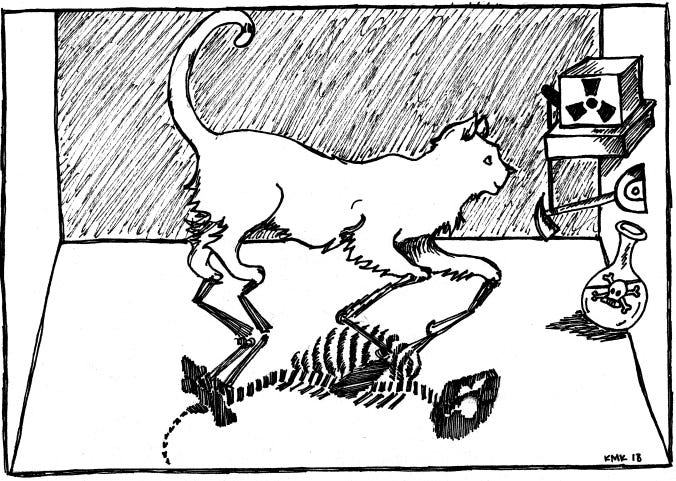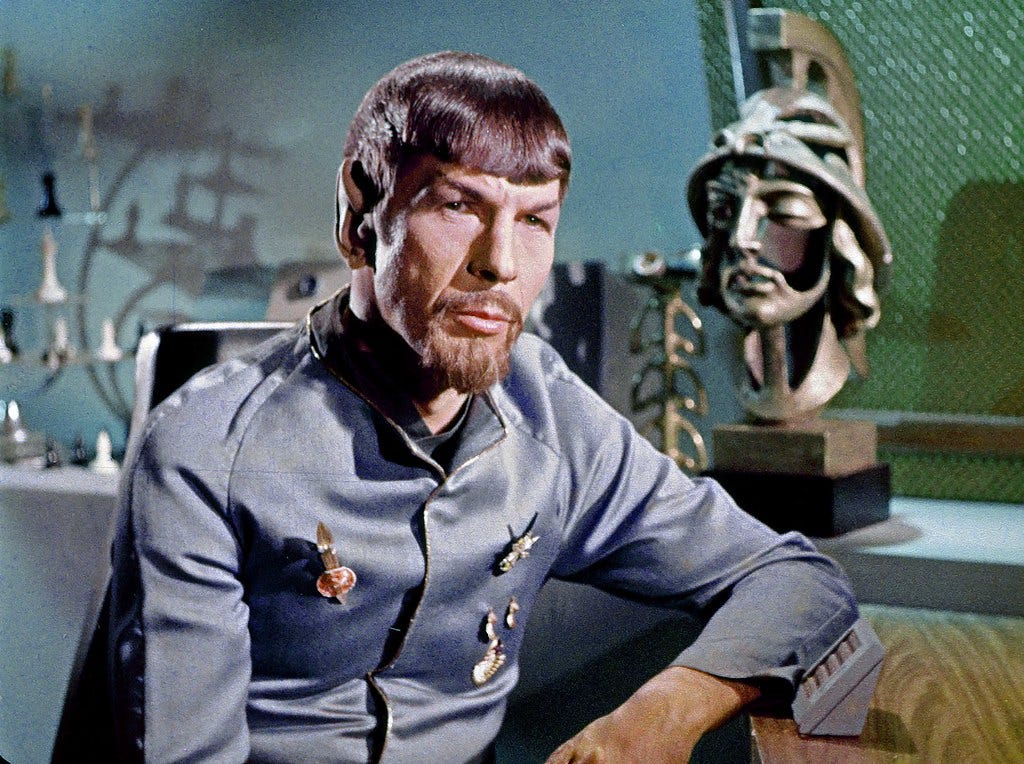I was so proud of myself when I came up with the concept for this cartoon. I genuinely thought I’d solved the problem of the mystery of the Trinity with physics and math.
“Take that, theologians!” I thought.
Alas, no.
This cartoon shows God the Father, God the Son, and God the Holy Spirit in the “ket” notation used in quantum physics. “Ket” notation shows a system as a superposition of probabilities of different states.
The one-over-the-square-root-of three in front of each member of the Trinity is a normalization factor. The states in a system are normalized so that the total probability of the system existing adds up to 1.
Applying the Pythagorean theorem, we get
Okay, so what does this superposition mean? There are different interpretations.
Wonderful Copenhagen
A system might exist in all of these states, until something “collapses” it into a single state. In the equation above, each of the “states” of God has an equal probability of occurring; but since “God” exists in whatever form, the probability has to equal 1.
This kind of scenario is associated with Danish physicist Niels Bohr, and so it’s referred to as the Copenhagen Interpretation of quantum physics. A famous illustration of the Copenhagen Interpretation is Schrödinger’s cat (or, ahem, Schrödinger’s poodle if you happen to love cats).
Many Worlds
Another interpretation is that all of these states in the equation exist, but each exists in a different universe. This is the scenario associated with American physicist Hugh Everett, and it’s referred to as the Many Worlds Interpretation. Another name for this is the multiverse, or parallel universes. Episodes of Star Trek have famously explored this idea.
There are many other interpretations of quantum physics. Personally, I prefer the Copenhagen Interpretation.
Back to the heresy
Anyway, my cartoon was supposed to show that God could be thought of as the superposition of the states of Father, Son, and Holy Spirit.
Pret-ty clever, I thought, until a friend pointed out that it commits the heresy of partiality.
You see, God is not the sum of partial states—God isn’t sometimes the Father, sometimes the Son, and sometimes the Holy Spirit. God is fully the Father, fully the Son, and fully the Holy Spirit, all the time.
For better or worse, it’s probably impossible to come up with an analogy for the Trinity that doesn’t commit heresy. That’s the mystery of the Trinity. Some things about God are just going to remain beyond our understanding, even for physicists.
Then again, physicists are used to the limitations of analogies and the problems they cause. If you don’t believe me, try to come up with an analogy for curvature of four-dimensional spacetime that doesn’t commit some sort of conceptual error. I bet you can’t.








Great stuff Sarah, thank you. I still don't understand the cat, but someday. I love that you make your world available to us. Thank you.